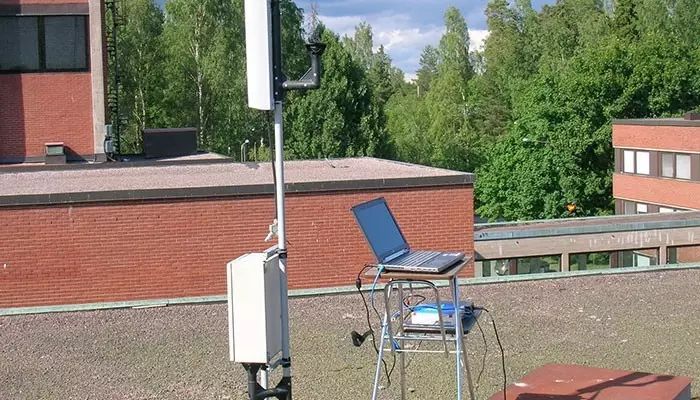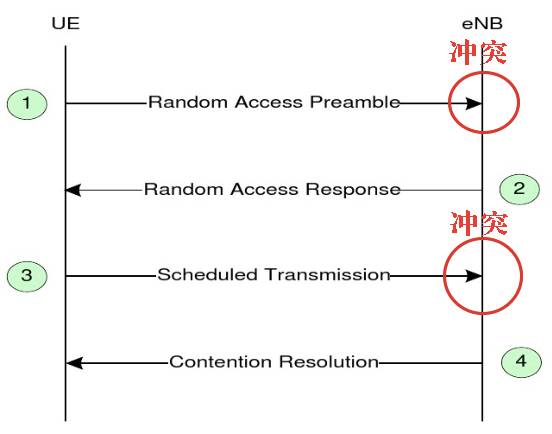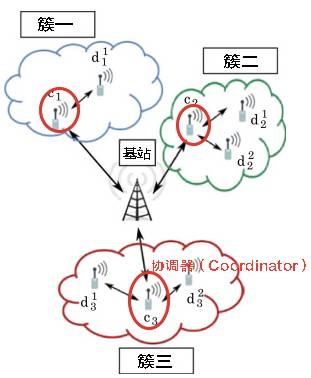The Internet of Things (IoT) is a key technology that will determine the future economy. The ubiquitous interconnection of all things will eventually become a reality.
However, achieving ubiquitous IoT coverage is not that easy.
IoT technologies such as ZigBee, 6LoWPAN, or IEEE 802.11ah are only suitable for short-range IoT coverage and cannot guarantee reliable network coordination and control. The cost of satellite communication is prohibitive, with high energy consumption and inability to reach indoors.
The times are calling, and cellular networks are gracefully stepping in.

The IoT, with its delicate body, has hooked up with the globally covered 2G/3G/4G networks, which can save at least a decade of struggle.
The 2G/3G/4G networks are like the wealthy generation, mature and steady, gentle and affluent, providing a unique sense of security. They have extensive network coverage, dense distribution, and reliable network coordination and control, ensuring the security and effectiveness of IoT, while being easy to plan, manage, and monitor. IoT can directly connect to existing base stations, moving in with ease, fulfilling your villa dream.
To accommodate the delicate body of IoT, the 2G/3G/4G networks have begun to refine themselves, rejuvenating their strength. They enhance coverage, reduce power consumption, simplify device complexity, lower latency, and minimize the cost per bit.
After all, there are times when generations apart can feel powerless.
GSM has limited capacity and cannot meet the simultaneous access of a large number of devices. The wealthy generation is striving; it reduces signaling overhead, controls overload, tightens resource granularity, and expands coverage. However, this is merely a stopgap measure, like supplementing male hormones, not a fundamental path for the future; the days ahead are long. The power consumption and access latency of GSM have left the IoT with the regret of a first night.
As for 3G (UMTS), it operates at a higher frequency band, has a smaller coverage area, and poor indoor coverage, while UMTS modules are much more expensive than GSM modules. Pass!
Hoping for LTE?
Dreams are easily forgotten, but the original intention is hard to change.
LTE was designed for data floods and did not initially consider IoT needs.
Honestly, every time I hear that LTE is going to embrace IoT, I feel like it is just holding on.
The characteristics of LTE networks are: few devices, large traffic. A small number of devices compared to massive data traffic means that signaling traffic can almost be ignored.
The characteristics of IoT are: many devices, small traffic. A massive number of devices compared to sporadic data packets can lead to a significant surge in signaling traffic, potentially causing network paralysis.
LTE, in conjunction with IoT, faces many real challenges, including control overhead, energy efficiency, coverage enhancement, robustness, security, and scalability.
What worries me most is the coexistence of IoT services with traditional voice and data services. When a large number of IoT devices connect, how can we avoid impacting traditional services?
The random access procedure (RACH) of LTE is the first challenge on the table.
When a User Equipment (UE, such as a mobile phone) wants to establish a data connection with a base station (eNodeB), it triggers the random access procedure to synchronize with the network.RACH consists of a series of time-frequency resources called RA time slots. The UE sends an access request to the eNodeB using a preamble sequence in the RA time slot.
There are two types of LTE random access procedures: non-contention-based random access and contention-based random access. Each LTE cell has 64 preamble sequences, used for both non-contention and contention-based random access.
The non-contention-based random access is controlled by the network, avoiding conflicts, reducing access latency, and ensuring access success rates, such as in handover scenarios. This does not affect IoT services.
What affects IoT services is the contention-based random access procedure.
The contention-based random access procedure can be divided into four steps: Message 1-4:

(1) Preamble transmission (Message 1)
(2) Random access response (Message 2)
(3) Message 3 transmission (RRC Connection Request)
(4) Contention resolution message (Message 4)
In the contention-based random access process, two conflicts can occur.
First conflict:
Message 1: The UE randomly sends a preamble sequence to request access. Since the preamble sequences are orthogonal, multiple UEs can use different preamble sequences in the same RA time slot. In this case, the eNodeB can decode the request.
If two or more UEs use the same preamble sequence, a conflict occurs, causing the eNodeB to be unable to detect the request.
Of course, even if multiple UEs use the same preamble sequence, due to different received signal strengths, the eNodeB may still detect the request. However, this will lead to the eNodeB sending the same Message 2 (random access response) to multiple UEs, which will trigger a second conflict at Message 3.
Second conflict:
If different UEs receive the same Message 2, they will obtain the same uplink resources and send Message 3 simultaneously, leading to the second conflict.
The random access process becomes the first challenge for LTE to embrace IoT because when a large number of IoT devices attempt to access the base station simultaneously (for example, when all earthquake monitoring devices in a region send alarms at the same time during an earthquake), signaling spikes can occur, leading to PRACH overload, increased contention possibilities, and higher access latency and failure rates.
Although to reduce PRACH load, we can increase access scheduling in each frame, this will reduce data transmission resources, leading to tight uplink channel data transmission capacity.
Additionally, the RA time slots allocated in LTE frames are limited. At the same time, the Zadoff-Chu sequence used for PRACH preambles is constrained by the computational capabilities of IoT devices.
In summary, LTE struggles to handle the access of large-scale IoT devices, and the resulting access latency and failure issues will impact traditional data (and voice) services, which in turn will affect IoT services.
You cannot have your cake and eat it too.
There are solutions available.
For example, separating access requests for people and things, which mainly includes three types: forced separation mechanism, soft separation mechanism, and hybrid separation mechanism. Forced separation perfectly isolates access requests for people and things. Soft separation means that people and things share a resource pool but have different access probabilities. Hybrid separation is a combination of the previous two.
For instance, the Fast Adaptive Slotted Aloha technology estimates the number of activated IoT devices in the network (network status) using continuous idle or conflict time slots and quickly updates the transmission probability of IoT devices, thereby reducing access latency.
Another example is the clustering mechanism, where IoT devices are randomly distributed within a cell, dividing them into multiple clusters, with one coordinator selected in each cluster. This coordinator is the only device in the cluster that communicates directly with the base station and acts as a relay node for other devices in the cluster to communicate with the base station. This not only limits the number of devices accessing the base station simultaneously but also reduces the overall system power consumption.

…
There are many solutions, and I won’t list them all.
However, all solutions are “for research and testing only”; there is still much work to be done for LTE and IoT to seamlessly integrate into commercial use. At the same time, the application scenarios of IoT are diverse, requiring higher flexibility from the network. How to design, optimize, and ensure that traditional services of operators (after all, they have higher ARPU) are not affected is a real challenge ahead.
So, can 5G handle IoT?
Massive MIMO, heterogeneous networks, millimeter wave (mmWave), SDN/NFV are usually considered the key technologies of 5G. Can these key technologies meet the needs of IoT?
Massive MIMO
Massive MIMO enhances spectral efficiency by deploying more antennas at the base station than the number of cell terminals, utilizing spatial diversity. This feature allows the base station to receive multiple transmissions simultaneously, appearing very suitable for large-scale IoT device access. The question is, how many antennas need to be deployed on the base station for large-scale IoT device access? Can it be technically overcome?
Heterogeneous Networks
We say that the future network is a heterogeneous network, deploying many small cells to meet network capacity demands.
However, this is to solve capacity issues and improve network speed. For IoT, the key is not network speed, but coverage, reliable and ubiquitous connectivity, which is contrary to the small cells solving hotspot capacity issues.
The demand scenarios for people and things are completely different. For example, highways in rural areas are key coverage areas for IoT but are not data traffic-dense areas. There is no consistency in coverage between people and things, which does not make economic sense for operators in terms of investment. Even in areas dense with IoT devices, the ARPU value brought by IoT services is far lower than that of traditional services. Considering return on investment, operators are unwilling to deploy small cells for IoT.
Millimeter Wave (mmWave)
Millimeter wave showcases an irresistible charm to 5G with its broad spectrum resources. The characteristics of millimeter wave are: fast speed, short coverage distance, and high power consumption. These three characteristics are completely opposite to the needs of IoT, which are: low speed, long coverage distance, and sufficiently low power consumption.
SDN/NFV
Software Defined Networking (SDN) and Network Function Virtualization (NFV) abstract physical networks, facilitating flexible management of network resources and supporting different types of services. SDN/NFV provides different data flows based on different services and can dynamically schedule virtualized network element functions, which is excellent for IoT.
On one hand, SDN can separate human and IoT services while ensuring the QoS of the separated logical networks, effectively utilizing network resources and alleviating network issues caused by large-scale IoT device access.
On the other hand, NFV can dynamically manage network structures based on traffic demands. For example, NFV can transform network elements in a certain area based on traffic demands; it can be an IoT data collection center, a relay for extending coverage, or revert back to a base station to handle temporary peaks in access requests.
In fact, SDN/NFV shows us the possibility of a future “infinite capacity” network.
However, SDN/NFV will bring disruptive changes to network structures, even to the entire industry chain. Device vendors pushing for virtualization are like cutting off their own arms, fighting against themselves. Even for operators, the extent of their determination is uncertain.
Nevertheless, the 2G/3G/4G cellular networks have weathered many storms over the years, maturing and becoming robust and affluent; they are the natural choice for IoT, a must-have for the connection. Rejuvenate their strength, roar!
That’s it; I enjoy seeing some people feeling helpless yet having to admit defeat. In this dog abuse festival, I taste a hint of sadness.
Network optimization mercenary submission email: [email protected]
Long press the QR code to follow
